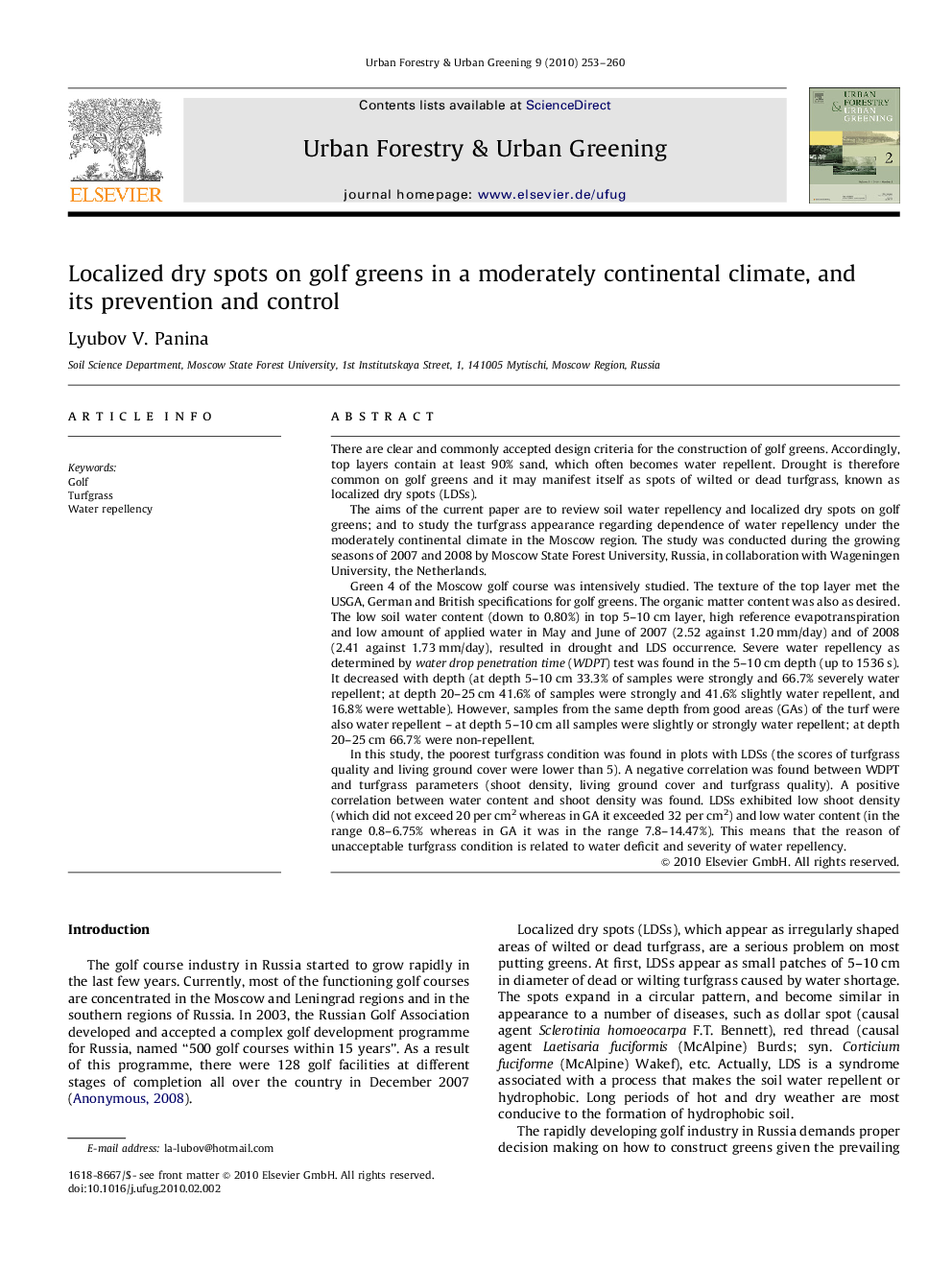| کد مقاله | کد نشریه | سال انتشار | مقاله انگلیسی | نسخه تمام متن |
|---|---|---|---|---|
| 94312 | 160271 | 2010 | 8 صفحه PDF | دانلود رایگان |

There are clear and commonly accepted design criteria for the construction of golf greens. Accordingly, top layers contain at least 90% sand, which often becomes water repellent. Drought is therefore common on golf greens and it may manifest itself as spots of wilted or dead turfgrass, known as localized dry spots (LDSs).The aims of the current paper are to review soil water repellency and localized dry spots on golf greens; and to study the turfgrass appearance regarding dependence of water repellency under the moderately continental climate in the Moscow region. The study was conducted during the growing seasons of 2007 and 2008 by Moscow State Forest University, Russia, in collaboration with Wageningen University, the Netherlands.Green 4 of the Moscow golf course was intensively studied. The texture of the top layer met the USGA, German and British specifications for golf greens. The organic matter content was also as desired. The low soil water content (down to 0.80%) in top 5–10 cm layer, high reference evapotranspiration and low amount of applied water in May and June of 2007 (2.52 against 1.20 mm/day) and of 2008 (2.41 against 1.73 mm/day), resulted in drought and LDS occurrence. Severe water repellency as determined by water drop penetration time (WDPT) test was found in the 5–10 cm depth (up to 1536 s). It decreased with depth (at depth 5–10 cm 33.3% of samples were strongly and 66.7% severely water repellent; at depth 20–25 cm 41.6% of samples were strongly and 41.6% slightly water repellent, and 16.8% were wettable). However, samples from the same depth from good areas (GAs) of the turf were also water repellent – at depth 5–10 cm all samples were slightly or strongly water repellent; at depth 20–25 cm 66.7% were non-repellent.In this study, the poorest turfgrass condition was found in plots with LDSs (the scores of turfgrass quality and living ground cover were lower than 5). A negative correlation was found between WDPT and turfgrass parameters (shoot density, living ground cover and turfgrass quality). A positive correlation between water content and shoot density was found. LDSs exhibited low shoot density (which did not exceed 20 per cm2 whereas in GA it exceeded 32 per cm2) and low water content (in the range 0.8–6.75% whereas in GA it was in the range 7.8–14.47%). This means that the reason of unacceptable turfgrass condition is related to water deficit and severity of water repellency.
Journal: Urban Forestry & Urban Greening - Volume 9, Issue 3, 2010, Pages 253–260